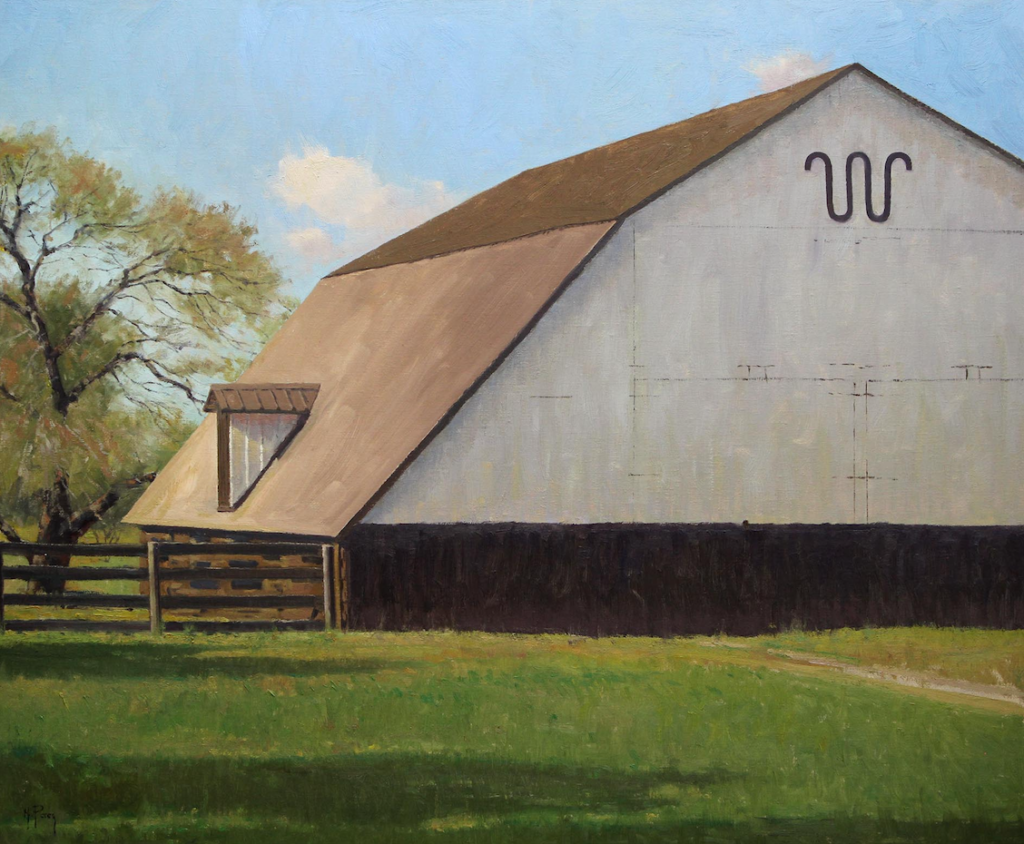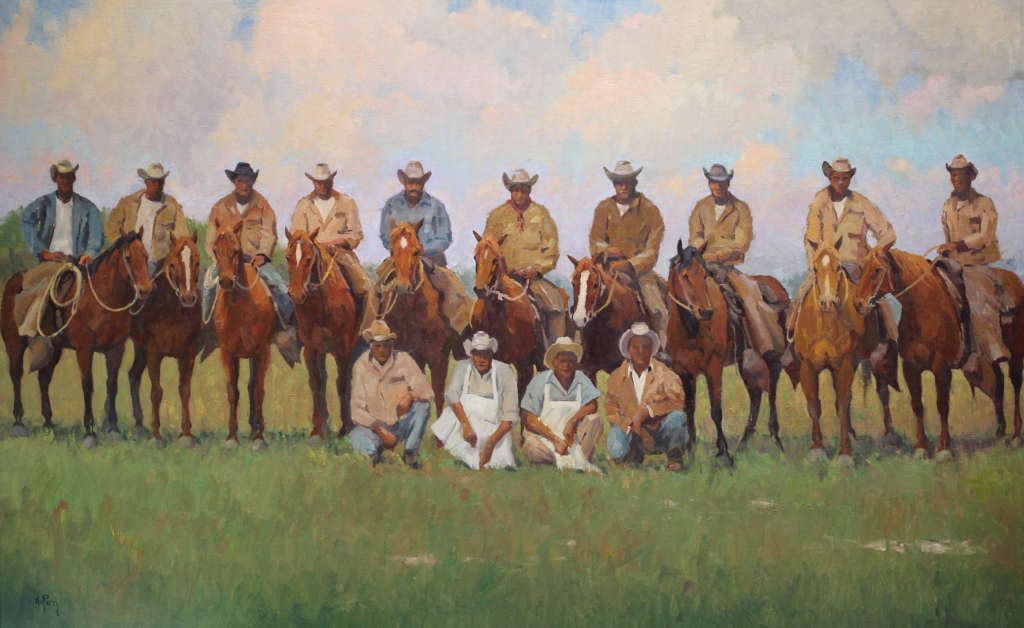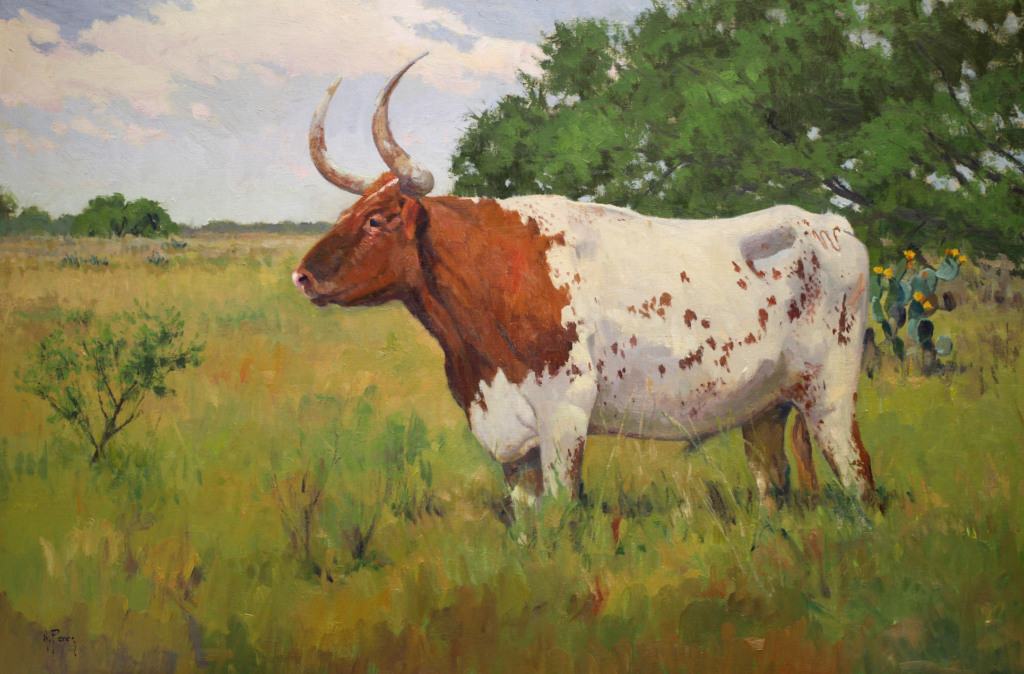
Behind the gates of a sprawling South Texas icon with painter Noe Perez.
Written by Jenn Thornton
When it comes to King Ranch, the sweeping South Texas cattle empire established in the Old West era, Texas Monthly reporter S.C. Gwynne had this to say: “The two big icons in Texas history, and there are only two. The Alamo. King Ranch. And that’s it.” Short and sweet, though the “history” of this near mythic place is as vast as the land itself. About 825,000 acres at last count, “more land than the state of Rhode Island.” That’s larger than life and lore.
Founded in 1853 by Richard King, a former riverboat captain and shrewd entrepreneur who was, as Gwynne described him, “a man who would settle things with his fists…a man who could settle things on his own,” King Ranch is a Texas institution precisely because Capt. King was a lodestar early on. Among his paramount moves was registering the now celebrated “Running W” insignia seen on the hides of Texas Longhorns and recruiting the indispensable Los Kineños—the rugged Mexican cowboys who became a vital part of ranch operations and whose descendants still live and work there today. These key decisions and others sowed the seeds of what grew to become what is now the biggest ranch in the country—a colossal agribusiness that includes cattle ranching, farming, luxury retailing and recreational hunting.

“Richard King’s sense of adventure was rivaled only by his vision and ability to seize on new business opportunities,” as King Ranch puts it. In grabbing the bull by the horns, Capt. King kickstarted a tradition of success, and in his wake came generations of ranch wins, from its first attempts at mechanization to game-changing innovations in fencing and dipping vats developed to battle the Texas Fever Tick. The ranch’s robust breeding improvement programs, meanwhile, led to the Santa Gertrudis, the country’s first officially recognized new cattle breed, along with some of its top Quarter Horses and high-stakes Thoroughbreds, including the 1946 Triple Crown winner Assault, which was foaled on King Ranch, and another runner in Middleground, the 1950 winner of the Kentucky Derby and the Belmont Stakes.
Designated a National Historic Landmark in 1961, King Ranch may have revolutionized the ranching world, but it reached its long tentacles into American pop culture, as well. The best-known example is Edna Farber’s opus Giant, which was inspired by the ranch and became the basis for the epic film of the same name that considered John Wayne, a giant of another sort, for the leading role of Bick Benedict. Now comes King Ranch on canvas. Currently on show at the National Cowboy & Western Heritage Museum in Oklahoma City, OK, King Ranch: A Legacy in Art; Paintings by Noe Perezis an exhibit made possible with the support of King Ranch, which offered the contemporary Corpus Christi-based landscape painter access to its picturesque grounds. With paintbrush in hand, Perez recreated the ranch—its land, livestock, wildlife and more—in vibrant and evocative depictions. The result is a colorful portrait of an American West ideal.
“Because King Ranch has been a working cattle and horse ranch for 170 years, artists have rarely gained access to it,” shares the museum’s Michael R. Grauer, McCasland Chair of Cowboy Culture/Curator of Cowboy Collections & Western Art. “Noe Perez’s access to the four different divisions of King Ranch, across parts of six Texas counties,” made the chance to artistically explore one of the most “historic and mythological places in Texas and the United States” on a more intimate scale, “the opportunity of a lifetime.” But the opportunity for museum viewers to also explore King Ranch up close doesn’t end when the Cowboy’s exhibit closes on Jan 2, 2024. Ranch fans can experience the real deal via a series of different guided tours held daily at King Ranch—a rare and intriguing breed.



